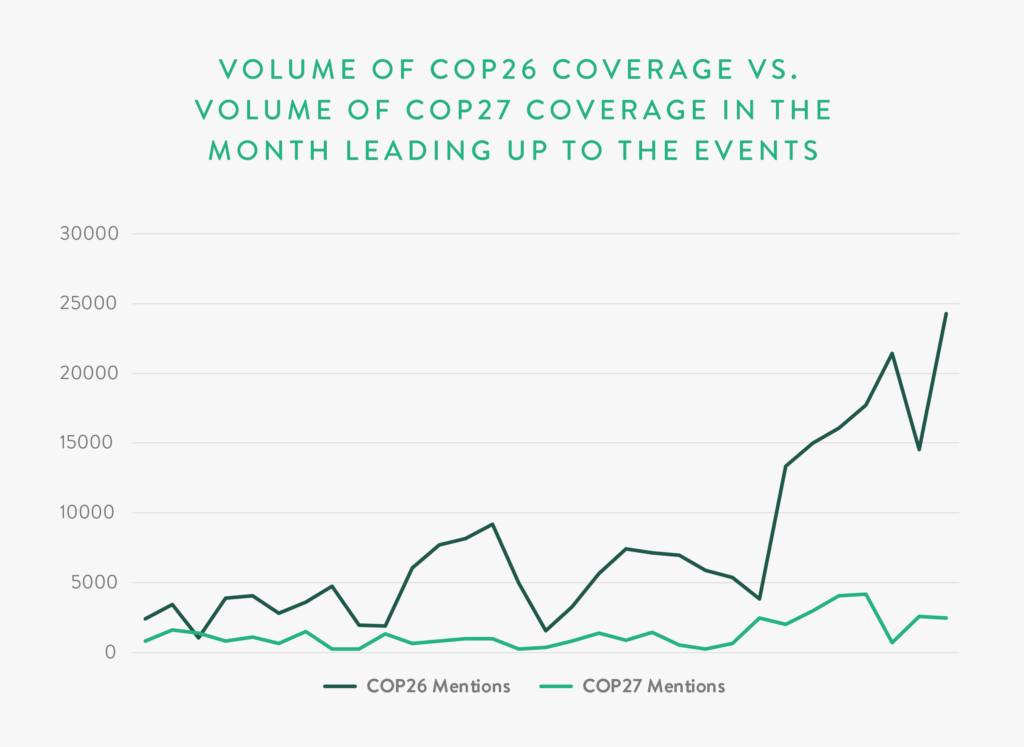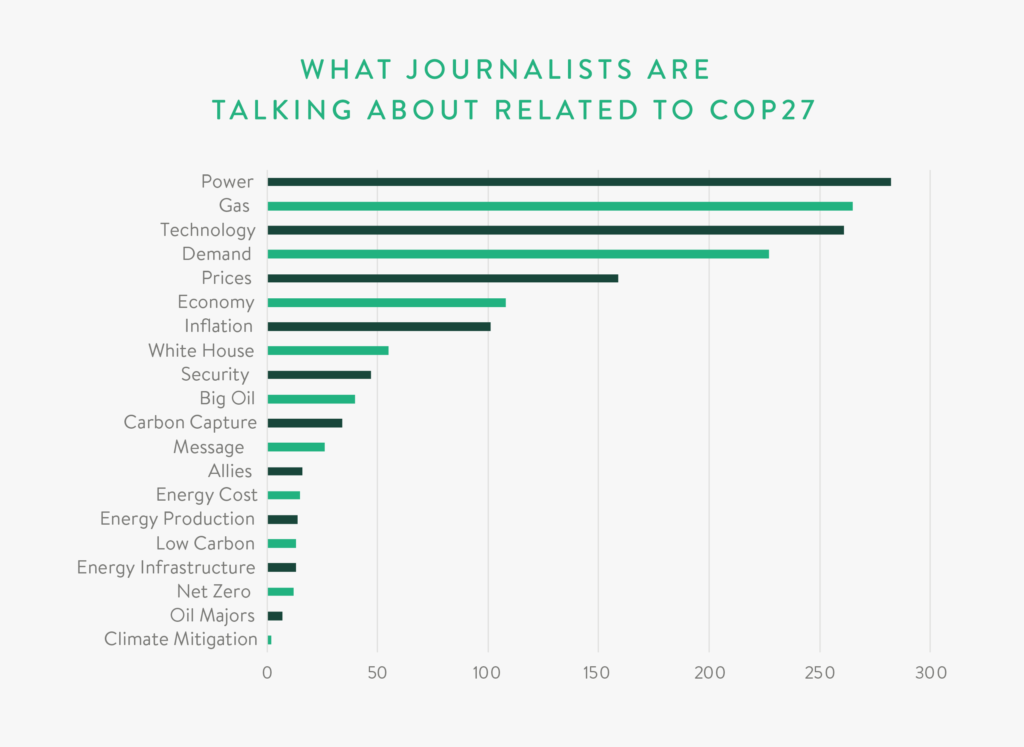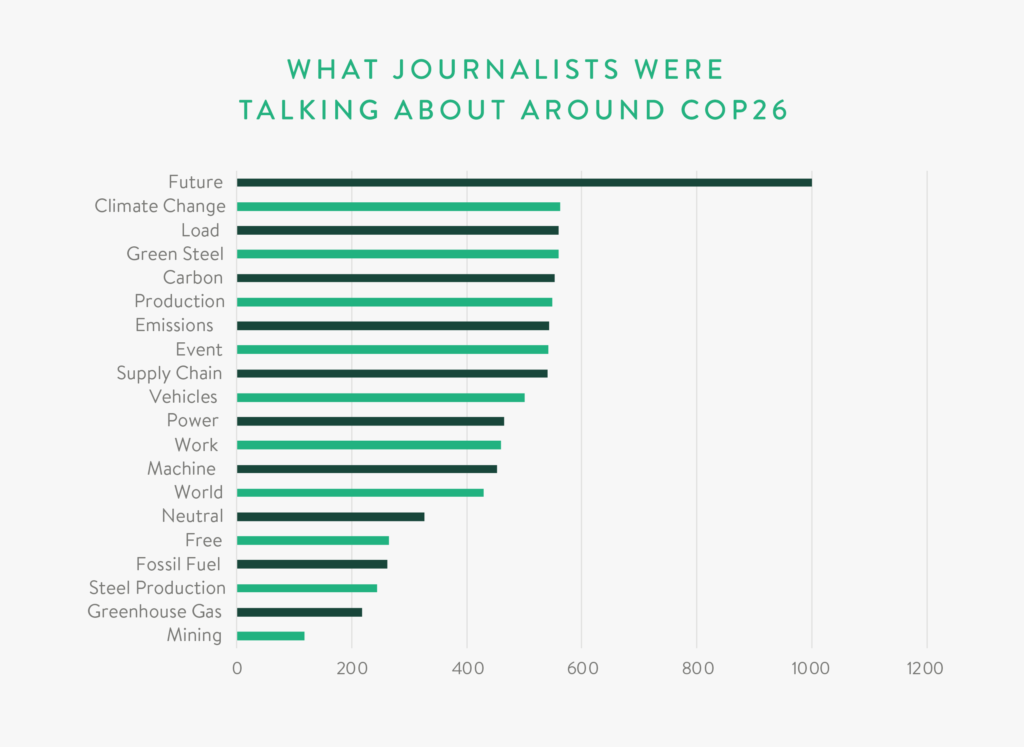Securing energy coverage is more competitive and complicated than ever before. Beyond the industry-agnostic impacts of shrinking newsrooms and shorter news cycles, the energy media landscape also faces deeply polarizing topics, a rapidly increasing number of companies operating within the space, and the added pressure of the world’s eye on what’s reported.
But there’s another factor that impacts the likelihood of whether reporters take an interest in a story that’s often overlooked — the volume of other news taking place at a given time. If multiple front page-worthy storylines are happening at once, then the pool of reporter time and attention is split, and often unevenly.
This scenario can be challenging to navigate. More coverage around a topic means reporter interest is high, and there are significant areas of opportunity to incorporate your company. But limited coverage of a topic means a much narrower window for securing media interest.
This trend is exemplified in media coverage around COP27, the United Nations Climate Change Conference, which begins on November 6, right around the midterm elections.
In the month leading up to COP26 in 2021, there were approximately 241,000 mentions of the term “COP26” in U.S. media coverage. But at the same point in time this year, “COP27” has only been mentioned around 56,000 times.
That’s a 77% decrease.

The midterm elections have already monopolized media attention over the past several weeks, and we expect they will continue to do so through the UN event. This means that on top of the already limited opportunities to provide media with expert commentary around COP27 this year, we’re also dealing with a prickly layer of politics overlapping most energy industry narratives.
But we are in the business of marketing communications solutions, not doom and gloom. So, what are media most interested in around this year’s event, and how might you increase your chances of securing interest from them? Here are four insights to keep in mind.
Like it or not, politics have entered the chat.
The graph below visualizes what terms are appearing most often in coverage of COP27 from some of the most active and influential U.S.-based clean energy reporters. The high volume of mentions of the White House, Inflation, Economy, and Big Oil all support our earlier point: Media are looking at the U.S. presence at the event and overall climate response through a political lens.

As you provide commentary around COP27, consider how your company relates to today’s politics and hot-button issues. Media are likely interested in how U.S. efforts to combat climate change are impacting voters ahead of the midterm elections and look for opportunities to provide clarity and credible perspectives around some of the more complex policies and initiatives on the event’s agenda.
Put global issues into context for the U.S.
Energy security, following the invasion of Ukraine and a worsening global energy crisis, is a good example of a global issue that must be localized to resonate with U.S. media. With U.S. energy prices expected to skyrocket heading into the winter, the volume of mentions around Security, Demand, Prices, and Gas tells us this conversation is hitting its stride among U.S.-based reporters. For topics like this, make the conversation specific to COP27 and explain the potential implications for U.S. policy and consumers.
Think less future state and more immediate action.
The graph below represents which terms appeared the most from the same set of reporters heading into COP26 last year. Future topping the list reflects reporters’ hyper-focus on how the global agreements discussed at COP26 would impact the future of climate change. This year, reporters are looking for action, as evidenced by the number of mentions of Technology, Climate Mitigation, and Energy Infrastructure. These terms are all related to potential solutions within the energy transition and growing needs surrounding emission reduction.

Rather than just providing a high-level perspective on broad commitments or ideas discussed at COP27, connect those insights to the steps your company has taken to become more sustainable to show how you’re translating understanding into action.
Calls for a more sustainable oil industry continue.
In 2021, coverage of COP26 was largely centered around steel production and making the steel industry more sustainable. But in 2022, all eyes are on oil. The volume of mentions around Big Oil and Oil Supermajor indicates media are paying attention to calls for the oil industry to address its emissions and their impact on the climate crisis. This conversation can be polarizing, so look for opportunities to provide media with unique data or research that root your perspective in fact, rather than perception or emotion, and position your company as an expert resource.
For more tips on engaging with clean energy reporters, check out three strategies we recommend to help win ongoing coverage in the space here.



